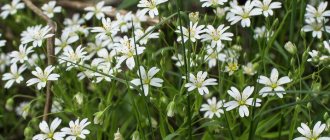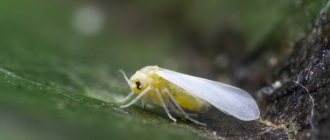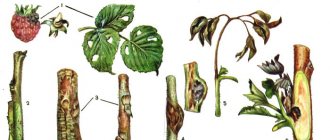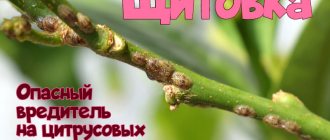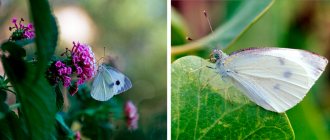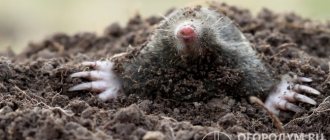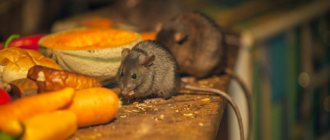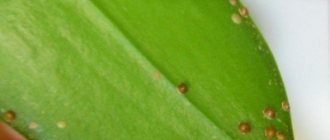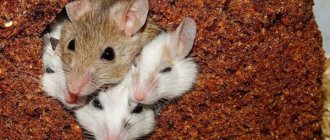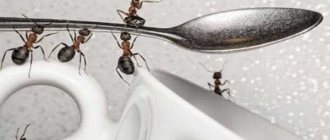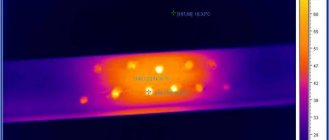Meeting the Kiwis
Kivsyaks are two-legged centipedes that primarily live on the forest floor. Another name for this family is diplopods. Each segment of the centipede's body (except the first three) has two pairs of limbs. There are about 8 thousand species of these animals in the world. The body is elongated, consists of many segments, more than 30 pieces. The body is completely enclosed in a protective shell. This structure makes the nooses invulnerable to mechanical stress and protects them from chemicals.
Interesting fact. The movement of diplopods begins with the forelimbs, then the remaining legs are connected. A kind of wave passes through the body.
The length of centipedes ranges from 2 to 30 cm. Giant individuals are found only in the tropical latitudes of Asia, Africa, and America. In temperate regions of Russia, millipedes of more modest sizes are found. Kivsyaks living in forests bring tangible benefits. Over the course of a year, they process a huge amount of rotting plant residues. In the middle zone, a common species is the gray noose. Its color is gray-steel, length 25-45 mm. Another common species is the sandy nodule. It is black in color and has two longitudinal orange stripes on its back.
Reproduction occurs by laying eggs. The male and female mate in warm weather (25-280) with high humidity. For laying, a nest is built from pieces of soil and excrement. The offspring are similar in appearance to adults, but differ in fewer body segments. During the growth process, they experience several molts. After each nod, several segments and pairs of legs are added.
Nodding at home – to be afraid or not
Kivsyaki are vegetarians, so they prefer to live in nature, among vegetation. They settle under stones, in piles of tops, under the remains of building materials. In these places, moisture is retained longer, and centipedes are also protected from sunlight. There are times when nooks break into the house. This occurs during periods of high humidity when the number of invertebrates becomes enormous. They are looking for new territories to settle. Choose rooms in the house where there is water - kitchen, bathroom. They can scare impressionable owners by crawling along walls and ceilings.
Diplopods are active at night; the sun dries out their bodies. They do not bite and are not carriers of diseases and infections. When threatened, centipedes curl into a tight spiral. This is how they protect the abdomen. Odorous and poisonous secretions from holes on the side help scare off predators. They are absolutely harmless to people; just wash your hands with soap.
Neighborhood with centipedes does not make anyone happy. When they appear, the question becomes acute: how to get rid of clowns in the house? Unfortunately, the action of insecticides on them is not always effective. It is better to use baited traps. They are laid out in the evening; to attract centipedes, cut potatoes and wet rags are taken. In the morning, the nods are trapped, they are collected and destroyed. You can add Pochin along with the food bait. This is an insecticide in the form of granules recommended for the destruction of soil pests.
Mechanical means of destruction
Mechanical methods of control include traps. Traps are installed in their habitats - near vegetable and berry beds. Let's look at several types of traps:
- A trap made of wire is half immersed in the soil. Poisoned, slightly rotting baits are placed inside the structure. Pieces of potatoes or carrots are used as bait.
- Wooden planks can also act as a trap for centipedes. The boards are laid out along the planting beds. It is recommended to lay the boards on slightly moist soil. In dry and hot weather, centipedes will happily hide under such a wooden shelter, since moisture remains under the boards longer. Collection of centipedes must be done daily several times during the day. Instead of boards, you can use pieces of slate, tiles and flat stones.
- Protect the plantings with wooden shields and stretch plastic film over the shields. From the side of the bed, spread the film with adhesive or oil, and dig trenches under the shields and install trays or jars. Centipedes climbing up the film from the outer side of the partition get stuck in the transition to the inner plane of the shield, which will be treated with glue or oil. Centipedes will not be able to move and will fall into the installed containers under the shield. The height of the shield should not exceed 10 cm.
- Small piles of tops or other vegetation can be laid out along the plantings. Millipedes crawl into such traps to get food or hide from the sun's rays.
The most popular means of getting rid of centipedes today are traps using pieces of root vegetables. In this case, the food in the baits is treated with suitable insecticides and scattered in different corners of the crop area. This method takes quite a lot of time, because it will require constant moistening and updating of the bait.
Most often, a complicated version is used, when the catch containers are buried at the bottom of the funnels and laid out under any moisture-insulating material (for example, a board). It has been established that parasites constantly use such places for shelter, so they will have to be removed from traps quite often. The disadvantages of this method include the ineffectiveness of application when the number of pests is high.
Baits can be used in other ways. It is necessary to dig compost-like pits and make them as attractive as possible for centipedes - filling the space with various garden waste is suitable for this.
It is worth noting that the efficiency will increase significantly if the contents of such pits are treated with sodium and potassium salts - a moistened, mixed mixture of this type, covered with a layer of turf, will create unfavorable living conditions.
Centipedes on the window
Nourishing plants cause big trouble to lovers of indoor plants. There is a small amount of organic matter in the pot, so the millipedes that get there begin to eat the roots of the flower. How do diplopods get onto houseplants? A common option is with soil taken from a summer cottage. If the soil was not treated before planting, the pest will move from the garden to the apartment.
Advice. Treat the soil in at least the simplest way - pour boiling water on it.
Favorable conditions for the development of centipedes are created by pouring tea leaves into a pot. Untimely removal of fallen leaves and buds provokes the proliferation of the pest. An overgrown colony of centipedes eats all the dead organic matter and takes over the flowers themselves. The safest way to get rid of them is to place the pot in a bowl of water. The flies will float to the surface, all that remains is to collect and destroy them. If this method cannot be carried out due to the large size of the plant, then insecticides are used - “Aktofit”, “Karate Zeon”.
Multi-legged pest in the garden
For gardeners, nooks in the country become a real disaster. They chew roots, weakening plants, and spoil berries and root crops. Usually a spotted or speckled noose lives in the garden. The centipede's body is white or beige, with red or orange spots on each segment. They mark the holes through which the protective secretion comes out. This species has a long, thin body and no eyes. The role of sensory organs is performed by the antennae. Females are longer and thicker than males, their body is 12-15 mm, and in males - 8-12 mm. Millipedes prefer to feed in the dark. The rest of the time they hide in shelters, and at high temperatures they burrow into the ground. On a cloudy, stormy day, the pest can be seen on the surface.
Attention. Due to their secretive existence, garden owners do not immediately realize the true culprit of plant damage.
Centipedes try to stay close to food sources; if there is a dung pile on the site, you will find them there. Their lifespan is 4-5 years, so development from larvae to adult is slow. The process takes 3 years. Females lay eggs near the feeding areas of the larvae - near strawberries and cucumbers. The offspring emerges in 2-4 weeks depending on weather conditions. The larvae will have to molt several times. Pests overwinter in the soil; adults and larvae enter diapause.
What benefits or harm do wasps bring to a summer cottage?
By nature, wasps are natural predators. Their bright colors indicate bold behavior; scammers are always in sight and never hide. The appearance of their shelter prevents the proliferation of other unhealthy insects: flies, mole crickets, weevils, spiders, grasshoppers. They are able to break into bee hives and easily deal with their defenders, destroying the larvae and eating the object of the bees’ labor - honey. Wasps, like bees, contribute their useful share when pollinating plants, which means they increase the harvest.
Unlike bees, wasps have a smooth sting and can sting much more forcefully and repeatedly. The consequences of a bite for a person are much more severe and take longer to resolve. For allergy sufferers, a sting can be deadly. Wasp venom substances can cause a powerful immune response in humans. As a result, swelling of the respiratory tract may occur and if immediate medical assistance is not provided, the victim may suffocate.
Adults feed on sweet juices of fruits and berries. They cannot handle the solid particles of fruit crusts; they eat away at the center of the fruit. The lacewings feed their larvae with protein particles, so they often fly into the house and eat meat and sausages.
How to identify a pest
In cold, wet spring, when plants are growing slowly, millipedes chew cavities in their root systems. These areas darken, and if there is a large area of damage, the crop dries out. Damage to strawberries is indicative. Kivsyaki make depressions of various sizes in the soft berries. In some cases, larvae remain inside. Typically, centipedes prefer rotten vegetables and fruits, but they will also crawl onto fresh ones. Especially if they are located close to the ground. The following crops are at risk:
- sugar beet;
- zucchini;
- potato;
- carrot;
- melon;
- tomatoes.
Not only the spotted nodule, but also other species - gray, Crimean, sandy - may appear on the site. All of them have a segmented body with double pairs of limbs, different colors - from steel to black. Millipedes breed in open and closed ground. In the humid environment of a greenhouse, they reproduce at a high rate.
Attention. It is important to start destroying the pest in time; in a day they eat an amount of food that exceeds half their own weight.
How to protect a private home in winter from uninvited guests
To protect your living space in winter, it is recommended to use the following highly effective and time-tested products:
- regularly lubricate areas of active movement of rodents with a mixture based on naphthalene and peppermint;
- the use of poisoned bait based on quicklime with the addition of granulated sugar;
- placing poisonous bait made from semolina or buckwheat with a putty mixture near rodent burrows.
A universal and very effective remedy against household pests and rodents is fumigation of the premises with sulfur bombs followed by general cleaning
In addition, it is important to take care of sealing the residential building and outbuildings
A universal and very effective remedy against household pests and rodents is fumigation of the premises.
Measures to combat the nodule
In the fight against centipedes, the main emphasis is on mechanical and agrotechnical methods of destruction. Due to its special repellent secretions, the pest has few natural enemies that could help control its numbers.
Baits for pests
If the nooses have multiplied in the garden, they are fought with the help of traps. There are several types of them:
- Make artificial shelters for shade-loving diplopods and collect them by hand.
- Lure them onto pieces of potatoes, carrots or other vegetables, collect and destroy them.
- Dig shallow grooves up to 10 cm, and place empty cans at the bottom. When crawling over an obstacle, pests will fall inside the container.
This method requires consistency; the baits must be monitored and accumulated individuals must be removed in a timely manner.
Agrotechnical actions
- To prevent the strawberries from damaging the strawberries, straw or mulch is poured onto the beds at the beginning of spring.
- Pests love moisture, dryness is destructive for them, so loosening the top layer of soil is recommended.
- If fruits damaged by the millipede are noticed, they are removed immediately.
- Pests are collected manually from traps and beds in the evening.
Chemicals
The effect of chemicals on grasshoppers is less effective than on other pests. But there are still benefits from insecticides. They destroy young larvae whose shells have not yet hardened like those of adults. It is recommended to use new generation products – “Aktofit”, “Karate”. The introduction of chloride salts into the soil has a negative effect on centipedes. In the evening, when the pests emerge from their shelter, regular table salt - NaCL - is sprinkled.
General agricultural practices
Organizational and preventive measures taken in a timely manner bear fruit in the struggle for the harvest. Among them:
- late autumn plowing and early spring cultivation, which contribute to the freezing of centipedes;
- growing green manure in combination with crop rotation;
- liming of lands;
- mandatory rules should be: the use of rotted manure, composts and humuses; control of their biological composition and final preparation.

